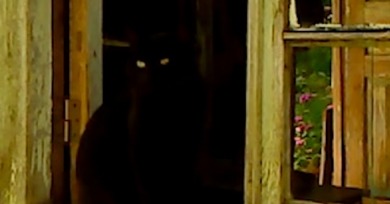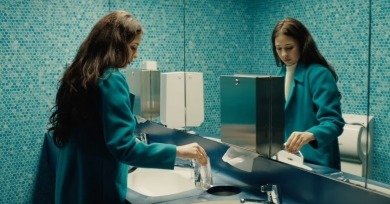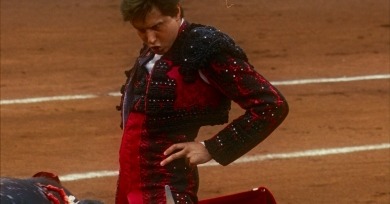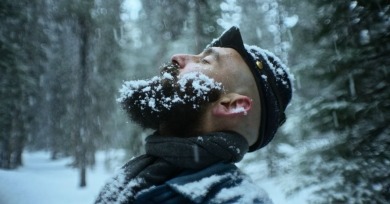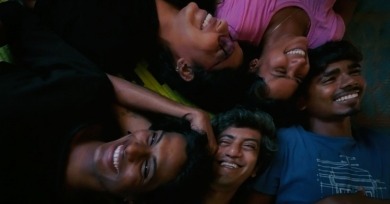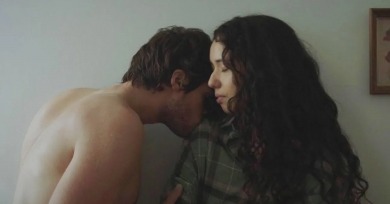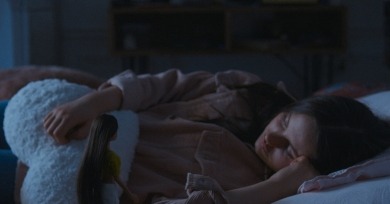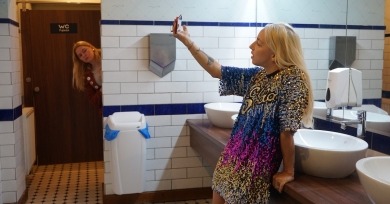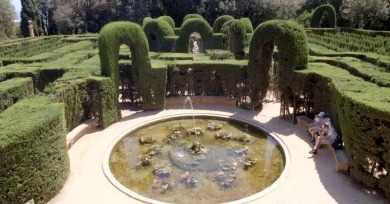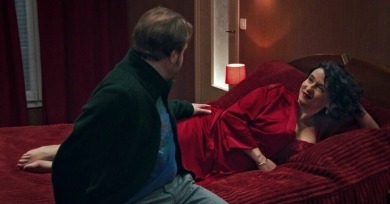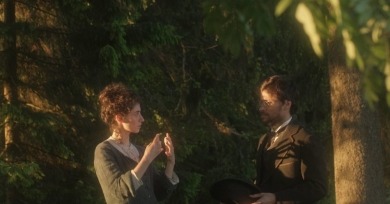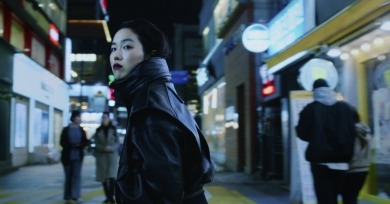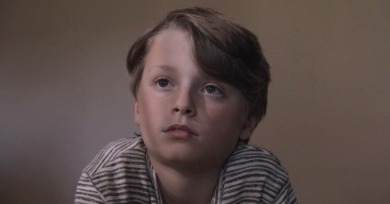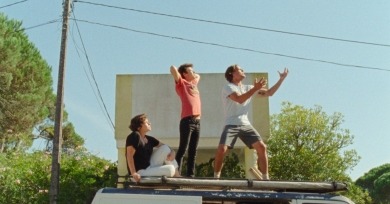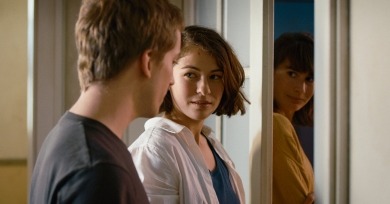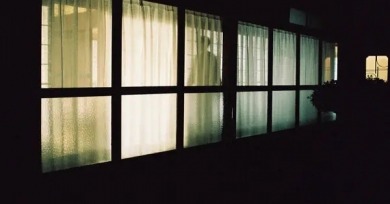Lawrence Garcia
What Does That Nature Say to You is notable not because it eschews dramatic material but because it withholds the usual means of discerning which details are relevant or irrelevant to the nominal drama.
Faces are difficult, if not impossible to make out; human and animal figures frequently blend into the background; ordinary spatial relations are distorted to the point of incomprehensibility. At times recalling the impasto intensity of late Godard, its images are vibrant and smeary and altogether beautiful.
Across its runtime, The Currents refuses straightforward answers to its questions. In the aftermath of her icy plunge, which she conceals from her husband and daughter, Lina becomes physically repelled by the sound and touch of flowing water.
Uninterested in proffering any moral judgments on bullfighting as a tradition, Serra instead investigates the perceptual, bodily specifics through which such a practice is both produced and sustained.
Rather than see the film as a tentative foray into fiction, it may be more useful to consider The Damned as a film that explores how one might have gone about making a documentary during the Civil War.
No longer confined to their home countries, its characters practically teleport between locations, their paths crisscrossing in ways that quickly become impossible to track. Across the runtime, individuals relate dreams, hallucinations, and memories of things that we’ve already seen or will see.
What distinguishes the film from a slew of other indie dramas, though, is how this conflict unfolds not just in spoken dialogue, but in the creak of the floorboards, muffled conversation through thin walls, the hum of the radiator.
In placing us so fully within the complexities of the COVID-era present, Coma reveals our very inability to unify it in thought.
Like Godard, Radu Jude is acutely aware of how every image or sequence of images can be sorted into genres, textures, colors, references, and so on, categories whose associations stretch back into the whole of cinema’s past.
So often in writing on experimental cinema (to say nothing of art in general) one is confronted with polarities of intuition and concept, emotion and intellect, feeling and form. Williams’s film demonstrates that while such distinctions may be legitimate, they need not be reified into strict dualisms.
The new film by Alain Guiraudie takes place in a world where sexual desire is not just acknowledged as protean and unpredictable but also freely expressed and even accepted.
Unrest exists at the confluence two crucial historical currents. Its title refers to the part of a watch known as the unrueh or balance wheel, whose oscillations regulate the entire mechanism, and thus to the rapid consolidation of factory labor that occurred in the late 19th century.
Like many an adoption drama, Return to Seoul does trace a search for personal identity. But the film is unusual in the degree to which its transformations conform to those of its protagonist, matching her changeability with its own destabilizing structural reinventions.
The Cathedral may be described as both a family melodrama and an oblique chronicle of American politics, spanning two decades. But the film is a far more discontinuous affair than such descriptions suggest.
Miguel Gomes is a director who tends to enfold question, answer, and, especially, non-answer, into his actual films. His latest, The Tsugua Diaries, co-directed with his partner Maureen Fazendeiro, is arguably the most systematic working-out of this tendency.
The filmmakers repeatedly return to one notable formal strategy: building up a link between two people across a given scene or shot, then punctuating it by cutting to a heretofore unseen observer.
First Time displays a conceptual rigor, its clear segmentation and wordless progression creating a characteristic, riddle-like fusion of sensation and mental reflection.
What Do We See? operates like a kind of benevolent human magic: it splits our attention between two poles, one natural, the other personal, between the coherent order of the natural spectacle and the driving personality behind it.
The TIFF Wavelengths program remains an essential overview of the goings-on in contemporary experimental cinema. Titles include Polycephaly in D, Dear Chantal, Inner Outer Space, The Capacity for Adequate Anger, and more.
The Works and Days (of Tayoko Shiojiri in the Shiotani Basin) runs a total of 480 minutes, or the span of an average workday. Shot for 27 weeks, spread out over a period of 14 months, it follows Tayoko Shiojiri over the course of five seasons, in her village in Kyoto Prefecture.

